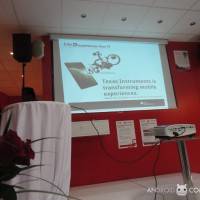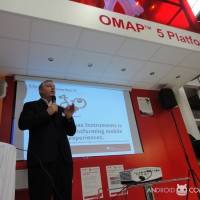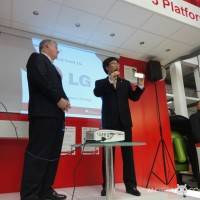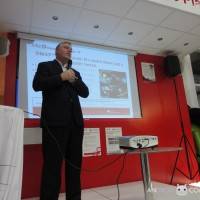
Earlier this week at Mobile World Congress 2011 in Barcelona, we bore witness to a lovely presentation by Texas Instruments on their current plans for the future. This presentation was accompanied by a device running OMAP4, sending picture through HDMI to a projector, all of this controlled by gesture (for example, when anyone from the group wanted to move to the next slide, all they had to do was swoosh their hand through the air over the device containing the images.) One of the keywords that stuck out during this presentation was “Me-D” or Me-Dimension.
What Me-D embodies, said TI, was the idea that since the world isn’t flat, neither should your experience living, working, and playing in the world. One of the big tools in making this Me-D ideal a reality is 3D display, said TI, this of course shown most recently in the Samsung Optimus 3D, also on display in the TI booth.
One of three tenants of Me-D is the so-called “Natural Dimension.” TI ties this to Gesture, showing this off the entire presentation with the swiped through the air mentioned earlier. Next, TI describes a second tenant as being a “Connectivity Dimension.” This connectivity TI’s described as “the Internet of things.” In addition to the Optimus 3D, TI noted that they’ve got ZIGB RF4TE working now, this working with Android as a remote control, and they’re planning on collaborating with ANT on an Android-based fitness program. The third notion in Me-D is what TI calls the “Projected Dimension.” To describe the projection dimension, TI notes that they’re working on PICO PLD, a system in which you’ll be able to interact with projections as if they’re physical objects [the holodeck is almost here!]
Because Me-D is social system as well, says TI, they plan on bringing a “series of products” to the market that have either 3D capabilities or gesture-sensitive capabilities, (and we hope both!)

















maybe LG Optimus 3D=)
maybe lg optimus 4d time traveler